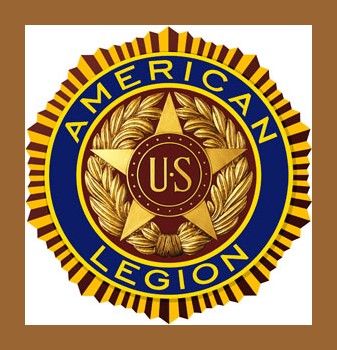The following history of the Gratz American Legion, Gratz, Dauphin County, Pennsylvania, was written by C. H. Willier and appeared in the souvenir book, Gratz Sesquicentennial, July 2-4, 1955:
The American Legion at Gratz was named the Charles E. Shade Post of Gratz. Charles was the first Gratz boy to give his life in World War I. His buddy, Ralph Witmer of town was only about 10 feet away from him when Charles was shot. Allen Schoffstall was in the same company; the three were from Gratz. They were in the F. C. 14 Regiment, 79th Division. The battle in which it happened was the Meuse-Argonne, France, 27 September 1918. Two of this group came back, and Ralph is living at this writing [1955] , 37 years older.
The Legion was organized in 1921 at Gratz. They met in the Smith Hall. Guy Klinger was the first Commander and Harry Zerfing was Adjutant General. Later on the Legion met in the Odd Fellows Hall. The membership was approximately fifty. Later the Valley View soldiers joined with the Gratz Legion, which increased its membership to over one hundred. They had by this time many of the weapons used by the Germans, such as swords, bayonets,pistols, etc. Since the Legion discontinued, none of the Gratz veterans knows what happened to the relics. They also had a record book about two inches thick and large in size containing pictures of the war and other documents.
They had received a citation certificate that Gratz had more soldiers in the war than any place of its size in the United States. It was signed by Woodrow Wilson, the President, and the Seal of the United States was stamped on it.
As Gratz was the leading town within a ten mile radius. they took the initiative for other towns on Memorial Day. They escorted the remaining Civil War veterans on their visits to neighboring cemeteries, starting at Gratz, then to Coleman’s Church [Lykens Township], Klinger’s Church, Erdman, Klingerstown, Hebe, Pillow, and then returned to Gratz. They stopped at each cemetery and decorated the graves and gave a salute by the firing squad and the Bugle Call. This was very much appreciated by the G.A.R.
A Reverend Duel, a preacher, was a member of the Gratz Legion. He would accompany the group and when the people turned out at the various cemeteries, he gave a talk. At Hebe about seventy-five had turned out to see and hear their program. At Pillow the band was out and at times had a parade in the morning when this group arrived. On one of these occasions they had a chicken dinner at Pillow furnished by Cyrus Leitzel and sponsored by the Legion. This was in 1922.
On other occasions they went the other way around and stopped at Klingerstown and had a picnic dinner for the G.A.R. and their wives which was prepared by the Legionnaires’ wives. At this time there were five members left in the Grand Army: John Hoffman; Jacob Shiro; Jacob Kissinger; Jerry McCoy; and C. T. Bowman.
In Gratz in the afternoon they had a parade led by the Gratz Band, and held a service in the Lutheran and Reformed Church. C. T. Bowman was the Major who led the parade.
The last of these great occasions that Gratz had was about 1923. The town was decorated with extra arches across the streets.
The largest parade ever held in Gratz was on 2 July 1955. There isn’t anything that can compete with this last one in the 150 year of past history. May the young boys and girls tell their great-grandchildren of the Sesquicentennial of Gratz, Pennsylvania.
___________________________________
Corrections and additional information should be added as comments to this post.
